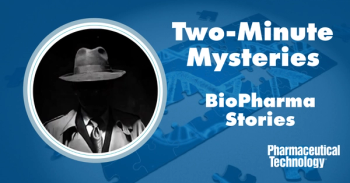
IMS: Global Drug Spending to Increase 30% by 2020
Global spending on medications will continue to rise, and it is expected to increase by $349 billion on a constant-dollar basis by 2020-more than $150 billion more than it increased during the past five years, according to a new IMS Institute for Healthcare Informatics report, Global Medicines Use in 2020: Outlook and Implications. Although the spending increase is large, total spending on medicines is expected to increase at a slower rate than it did over the past five years, when spending on medicines increased approximately 35%.
Global spending on medications will continue to rise, and it is expected to increase by $349 billion on a constant-dollar basis by 2020-more than $150 billion more than it increased during the past five years, according to a new IMS Institute for Healthcare Informatics report, Global Medicines Use in 2020: Outlook and Implications. Although the spending increase is large, total spending on medicines is expected to increase at a slower rate than it did over the past five years, when spending on medicines increased approximately 35%.
Importantly, global use of medicines will increase 24% by 2020, with half of the growth in access occurring in India, China, Brazil, and Indonesia. Spending domestically on generics will rise slightly, from 88% to approximately 92% by 2020.
Although the 2014 version of the same IMS report predicted that the highest growth in spend among the top five European markets would be in Germany and the UK as a result of mandatory discounts and budget changes, respectively, the 2015 version tweaked its predictions a bit. While Germany will likely see an increase in spend, as predicted (an increase of $16 billion by 2020), the 2015 report attributes these increases to "a wider adoption of innovation" through the implementation of health technology assessments. The 2014 version of the report also predicted that the growth in drug spend in Europe would remain relatively flat until 2018 as a result of cost-containment measures-but the 2015 version predicts a $40-billion increase in spend across Europe by 2020, which it says is mostly due to the activity in Germany and to the increased use of specialty medicines in Europe.
New drug approvals will drive increases in spend
According to the IMS report, one-third of the 225 medicines that are expected to hit the market will be indicated for cancer; 91% of the novel active substances developed to treat cancer will be targeted therapies (as opposed to cytotoxics, radiopharmaceuticals, and hormonal treatments). If there truly are 225 new medicines approved by 2020, this works out to be approximately 45 drug approvals per year, which is a higher rate of approvals per year than in 2014, when the record-breaking number was 41 drug approvals. The increased number of approvals per year indicates that FDA will be fairly busy until 2020, and suggests that the agency will be working more efficiently to push approvals through the regulatory process, especially when it comes to specialty medications and biologics. Of all of the new treatments, only 150 of the expected new drugs will treat widespread conditions; the other 75 will target orphan indications.
Faster approval rates mean that more new medicines will flood the market, and logic says that improvements to current treatment options will translate into price increases. "New medicines are substantial: We point to $135 billion in growth in developed markets from new medicines and one can expect that these medicines are more expensive than the ones they replace,” Michael Kleinrock, research director of the IMS Institute for Healthcare Informatics and one of the report authors, told BioPharm International.
What types of drugs are we taking?
While in emerging markets, a majority of spend (approximately $24 billion) will be for what IMS calls “traditional medicines”-in developed countries (including Europe and the US), only $1 billion or less will be spent on this type of drug. Rather, among 10 different drug types-including drugs for pain, cardiovascular disease, respiratory ailments, antibiotics, vaccines, and drugs for dermatology, mental health, and other central nervous systems conditions-developed countries will spend the most on drugs for diabetes, with estimates clocking in at more than $100 billion by 2020.
By 2020, developed countries will capture almost half (40%) of the total volume for specialty medications. This figure is not too surprising: In 2014, in the US alone, half of spend on branded medications was for the treatment of hepatitis C ($12 billion of $24 billion) and was spread out over the treatment of 140,000 patients.
Do higher drug spends affect patient cost?
Although the issue of high drug prices has been on the radar as of late, IMS points out that approximately 30% ($90 billion) of the estimated $298-billion increase in brand spending will be offset by manufacturer discounts and rebates. Thus, the figures for increased spending are somewhat misleading; once discounts, taxes, and “other adjustments that affect net sales” are considered, the spending estimate is reduced considerably.
As IMS notes in another separate but related report, Branded Medicine Price Increases and the Impact of Off-Invoice Discounts and Rebates, “Price levels for pharmaceuticals in the US market are often reported to the public based on list prices, and therefore do not reflect the series of adjustments that occur throughout the healthcare system and ultimately determine who pays what for medicines.” In that analysis by IMS, the company found that while price increases in 2014 were approximately 14%, after adjusting for price concessions, the true price increase was really closer to 6%.
Additionally, although invoice prices for drugs are expected to soar, authors of the medicine use report note that payers, pharmacy benefit managers, and competition from biosimilars will help to constrain actual price increases. This may also mean that actual price increases to customers may not be as high as predicted. However, Kleinrock told this publication that the IMS report on medicine use did not specifically examine how the mix of expensive drugs affects the overall spend. “What we’ve addressed is the use of medicines, particularly the shift towards life-saving and specialty medicines, some of which are expensive. In the report, we made a distinction between new medicines-which are often expensive, as they represent advances over previous medicines-and we haven’t looked at the individual costs to consumers," he stated.
The impact of biosimilars on drug spend
The impact of patent expiry will be larger than it has been in the past five years, and IMS predicts that biosimilars will reduce the impact of drug spending by $41 billion during the period of 2016–2020. The patent expiry predictions for biologics and how these expirations may affect drug spend are fairly indeterminate, however. As IMS notes, while patent expirations are scheduled to occur for a number of autoimmune, insulin, and cancer treatments, “specific products and dates are elusive due to the still evolving US biologics patent law situation.”
Source: IMS
Newsletter
Stay at the forefront of biopharmaceutical innovation—subscribe to BioPharm International for expert insights on drug development, manufacturing, compliance, and more.





